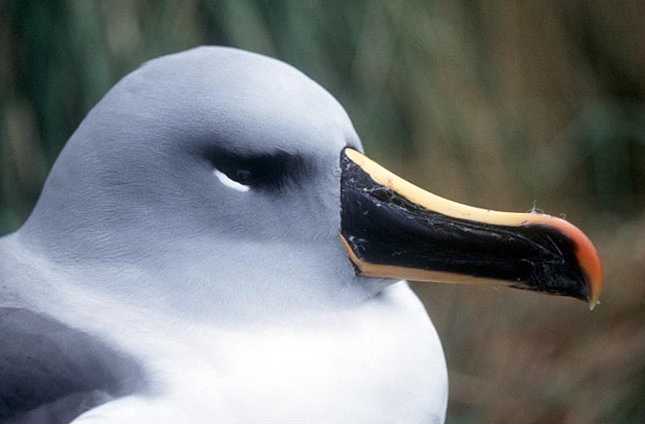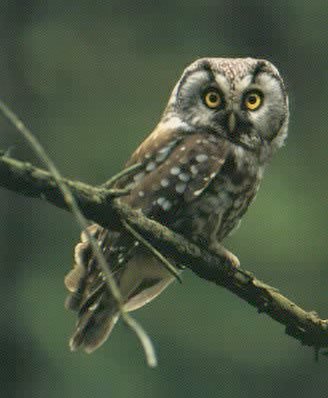Tengmalm's Owl
Aegolius funereus
The boreal Owl is one of the most secretive and sought-after of all american and european owls. It usually avoid open country and diurnal activity. This small brown owl, which may appear greyish in headlight's beam, is best recognized by the prominent black facial frames which give the "earless" owl a square-headed profile and a "surprised" expression. The bill is yellowish. The bird proposed for this quiz was a juvenile (left), chocolate brown with white eyebrows and cheeks spots. By contrast, adult birds (right) present black borders on facial disks, fine spots on forehead and white patches on scapulars.
Photographed by Serge Sorbi.

Gallery overview
Quiz Statistics
Quiz results
Rules
Hall of Fame
More links !








